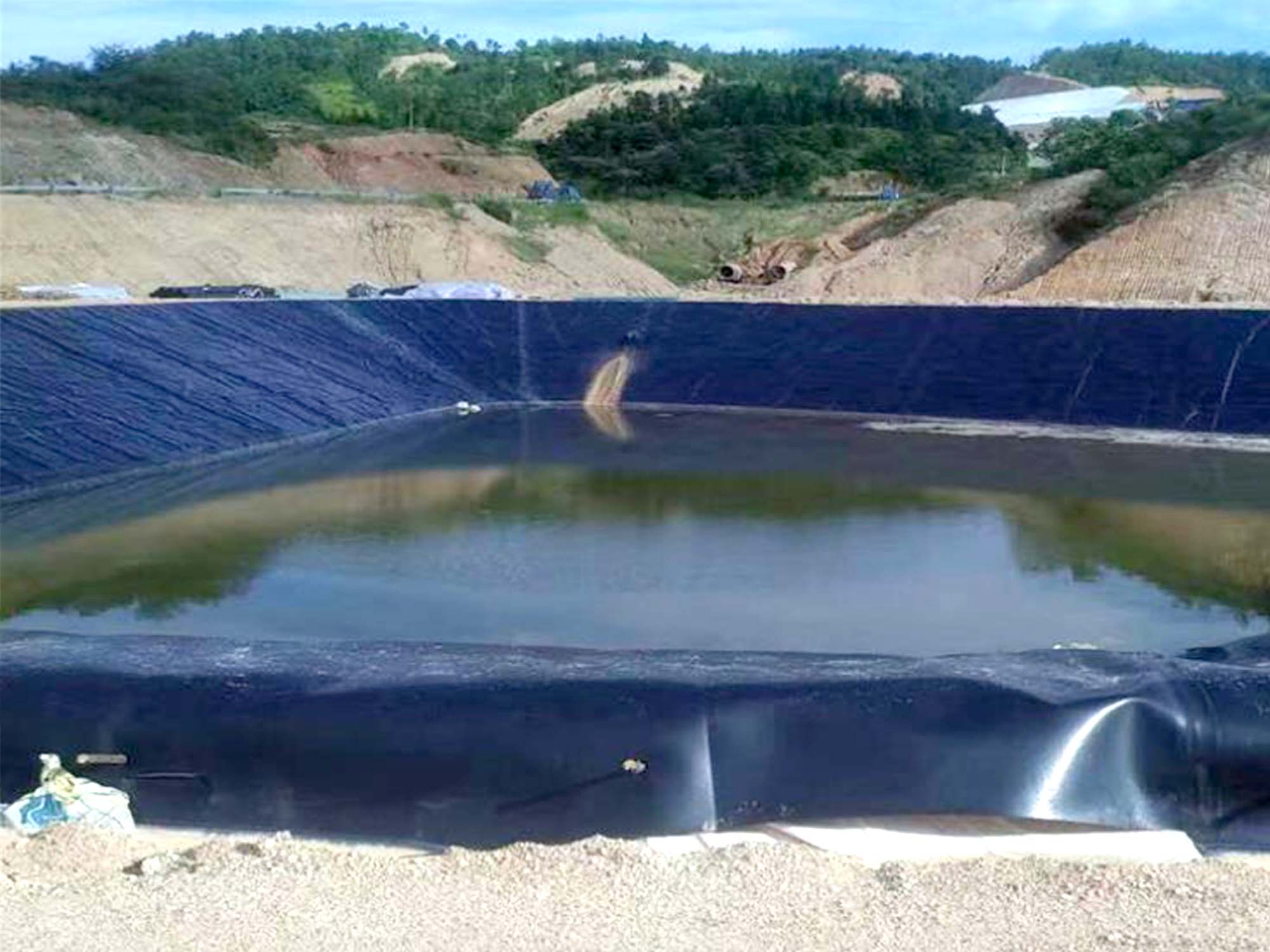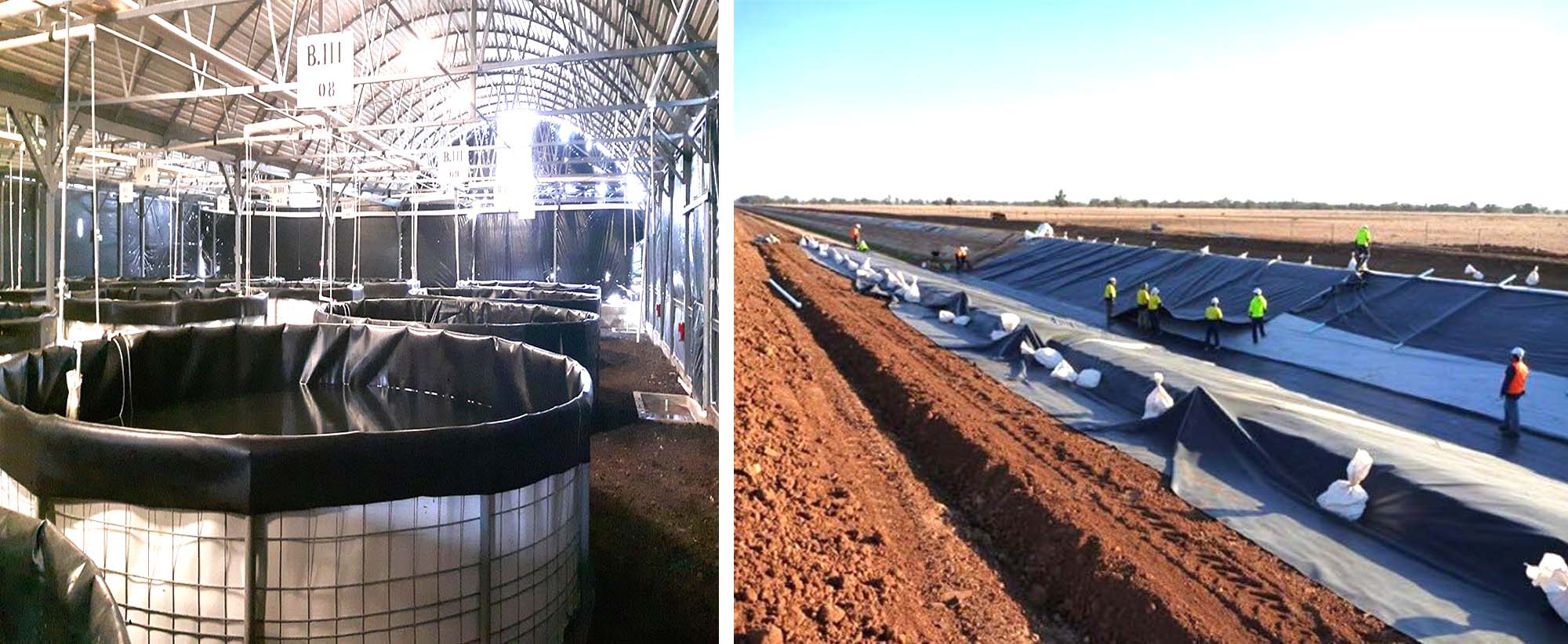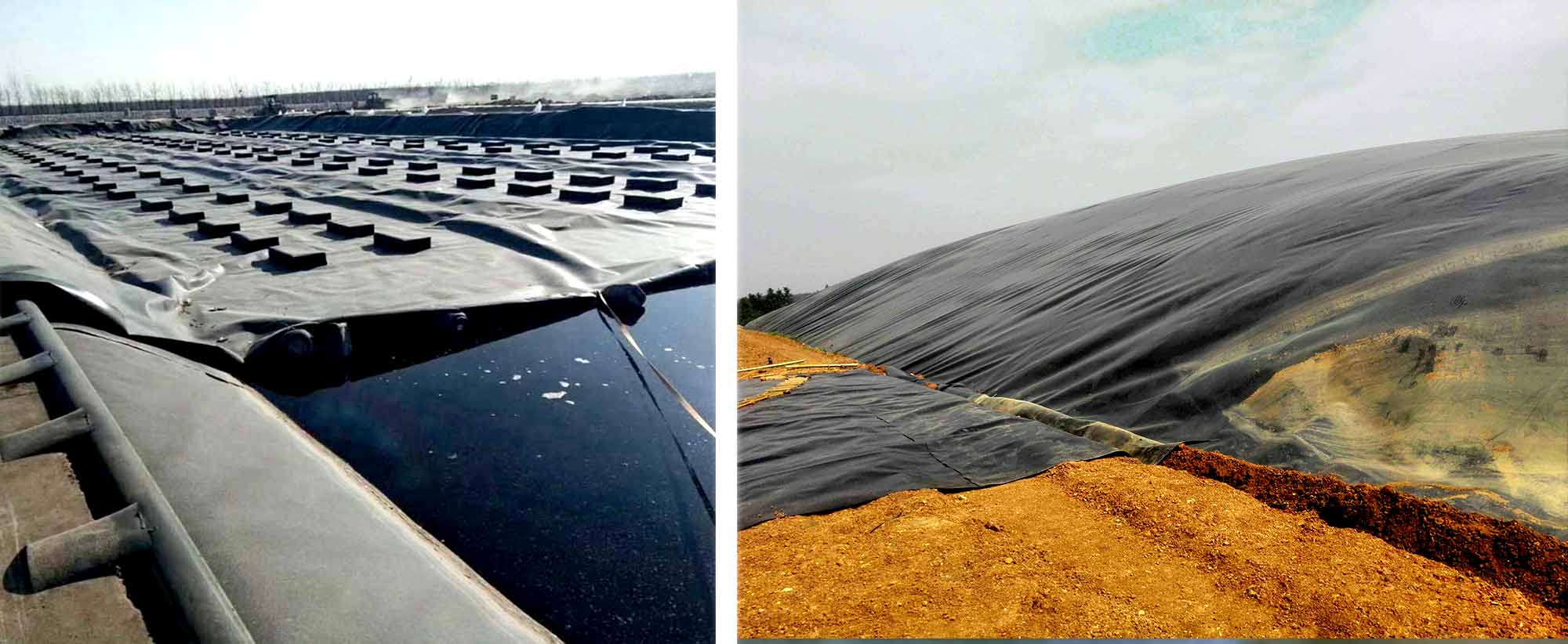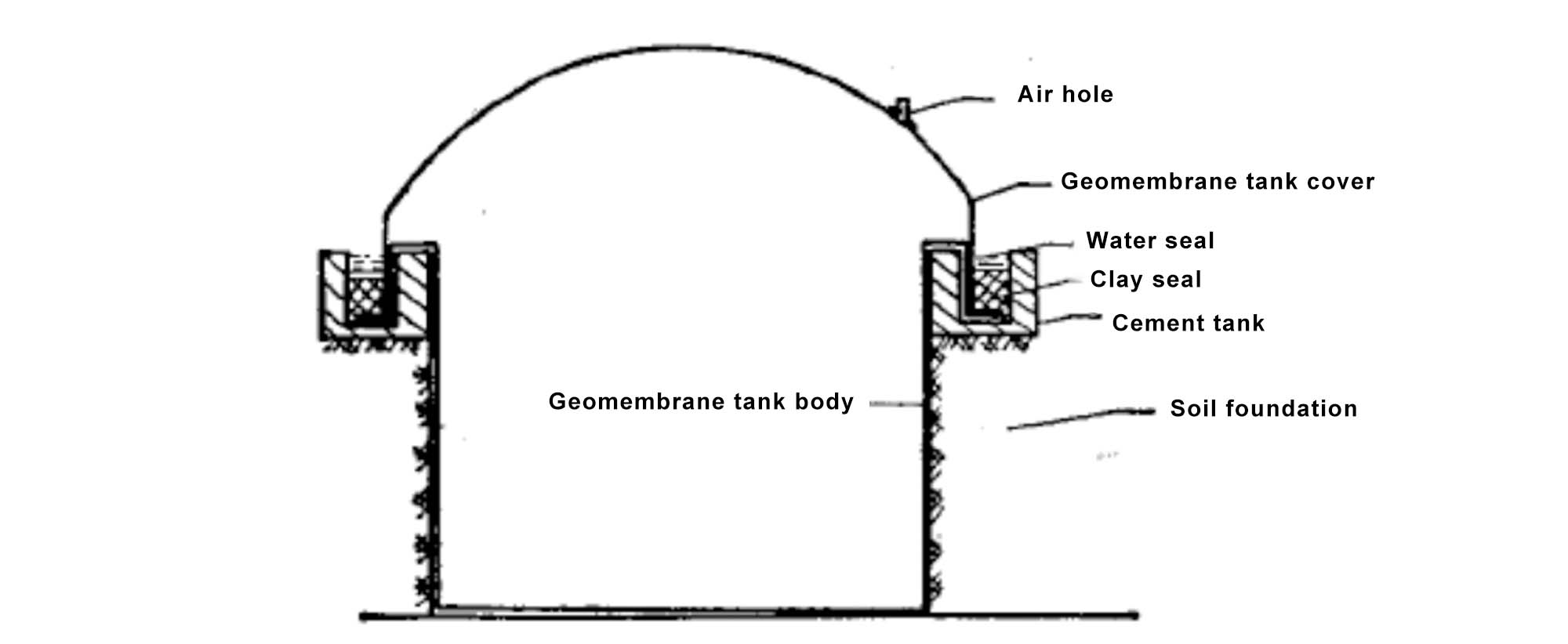GeoGro River wetland, Fish ponds and Biogas digesters

The HDPE geomembrane produced by our company can fully meet the integration of fermentation and
gas storage in biogas digesters. The whole oxidation pond is fully
enclosed by the anti-seepage material of HDPE geomembrane. The construction is simple, the
construction cost is low, the sealing performance is good, and the use
time is long. The HDPE geomembrane has strong anti-aging and anti-corrosion properties and good
anti-seepage effect.
1)In order to ensure the anti-seepage effect and service life of the structure, it is recommended to use
HDPE geomembrane with thickness more than 0.75 mm.
2)In order to reduce the weld and construction period, the width of 7 meters or more
should be selected. The area of the pond should considering the edge part (1 meter
circumference along the side wall), and a residual of 7% is expected. (Anchoring, lap
joint and leak repair welding).
3)After the construction of the biogas slurry pool is completed, water of about 0.8 meters depth
shall be injected as early as possible to protect the geomembrane from being exposed to the sun and
prolong the service life of the geomembrane.
 Key points of anti-seepage GeoGro's geomembrane slope protection
technology:
Key points of anti-seepage GeoGro's geomembrane slope protection
technology:
1) The base surface of the slope protection is smooth.
Regardless of whether it is rebuilding an old pond or building a new pond, the base surface of the slope
protection must be leveled before laying. The soil of the slope ridge must be dry, the slope surface must
be free of unevenness, and there must be no protruding stones or sharp objects on the surface. The slope
surface must be flat. Take the method of cutting and backfilling the soil layer and then ramming it to
make it solid. If there are many gravels on the slope of the ridge, a thin soil layer can be used to cover
it and then the method of compacting it can be used to avoid direct contact of gravel or sharp objects
with the membrane to extend the length. The service life of the membrane. The embankment of the newly
built pond is tamped and then laid. In some cases, after a period of use, uneven settlement will occur,
and the slope will appear uneven. You can level it again when the ridge is hardened and the pond is dried.
Use a level gauge to stake out the cable on the slope surface 0.3m higher than the water storage depth, so
that it is laid out smoothly and compliantly, without wrinkles.
2) The groove at the bottom of the slope foot in the pool.
For flat-bottomed ponds, at the bottom of the
slope toe, dig a trench with a depth and width of about 30cm each on the bottom of the bottom of the slope
as the standard; for pot-bottom-shaped ponds, excavate a surrounding trench at the hard bottom below the
wall groove.
3) Leveling at the horizontal line
At the horizontal position, a width of 30 cm is flattened along the cross section, or an anchor trench
with a depth of 10 cm and a width of 20 cm can be opened in the cross section to fix the impermeable
geomembrane under pressure.
4) Pond ridge seepage water treatment.
Mountainous areas are mostly trapezoidal ponds, and most adjacent ponds have height differences. Some pond
ridges have poor soil quality and strong water seepage. In the rainy season, rainwater tends to seep into
the pond ridges, which will cause the geomembrane to expand and swell outward. If there is a height
difference between adjacent pond ridges, burying geomembrane on the slope of the upper pond ridge can
prevent the lower one from bulging; for pond ridges with strong water seepage and rain, the surrounding
trenches should not be dug too deep, with a length of 30cm That is, when burying, the bottom of the trench
is laid flat and spaced a certain distance with wooden sticks or bricks
After the rock is compacted with the membrane, the soil is compacted and the seepage will naturally
overflow; it is also simple and practical to insert a water-conducting plastic pipe on the slope
protection surface. Method to prevent swelling and swelling.
5) Laying the inlet and outlet of the pond.
The membrane at the inlet and outlet can be cut and reserved according to the size of the pipe. The
position of the outlet can be fixed by casting cement mortar, or can be surrounded by woven bags of sand
and soil.
6) The laying of geomembrane.
In order to facilitate the construction, the geomembrane should be cut and spliced according to the width
of the geomembrane and the length of the site. The cut and spliced film can be rolled on steel pipes or
bamboo sticks and transported to the slope for laying. The geomembrane laying is divided into grooves and
slopes. Lay three parts horizontally and horizontally on the top of the slope. Roll paving in the
direction of the slope first and then adjust it. The paving of the slope is done from bottom to top. The
geomembrane and the slope are flat, leaving no gaps, no protrusions and wrinkles. The top and toe of the
slope are fixed by anchoring ditch or other reliable methods. To prevent it from sliding. Strive for
smoothness, moderate tightness, and not overtighten. When backfilling the trench, do not damage the
geomembrane, and do not use heavy machinery or vibration compaction. Laying should be carried out in no
wind or rain. Construction personnel should wear flat-bottomed cloth shoes or soft rubber shoes. Spike
shoes are strictly prohibited to avoid stepping on the geomembrane.

 GeoGro's geomembrane biogas digesters are divided into
two types: bag type and cover type.
GeoGro's geomembrane biogas digesters are divided into
two types: bag type and cover type.
In the GeoGro's geomembrane bag type biogas digester, the plastic film is first processed and
heat-welded into
an air bag, and a round soil pit with a diameter of 8 meters equal to the air bag is dug on site. An
annular cement water seal is placed on the upper pocket of the soil pit (with photos). The water seal
ring is prefabricated with cement, and its outer edge diameter is 2.7 meters, the inner edge diameter is
2.3 meters, and the water tank is 150 mm wide and 250 mm deep. Then cut the air bag into two sections.
The lower half should be able to roll over and cover the water tank; the upper half is the cover of the
digester with a gas pipe. After the fermentation liquid is added, cover the lid. The openings of the
upper and lower parts of the air bag should be attached together, and flattened with clay (200 mm
thick), and finally sealed with water in the groove. The plastic-film biogas digester made of thousand
carbon black is a low-pressure tank, and generally this sealing method will not leak gas.
The difference between the geomembrane cover type biogas digester and the bag type digester is that the
lower half of the biogas digester is an open tank with a cement and brick structure, and the upper half
is covered by a plastic membrane. The installation and sealing are the same as those of the bag-type
pool.
GeoGro's geomembrane has the characteristics of high strength, low temperature resistance, aging
resistance, and
easy adhesion. Using it as a construction material for biogas digesters is easy to maintain and easy to
operate. It overcomes the shortcomings of general hydraulic biogas digesters that are difficult to
discharge, and it can feed and discharge 2-3 times a year, saving labor and time.


 Key points of anti-seepage GeoGro's geomembrane slope protection
technology:
Key points of anti-seepage GeoGro's geomembrane slope protection
technology: 
 GeoGro's geomembrane biogas digesters are divided into
two types: bag type and cover type.
GeoGro's geomembrane biogas digesters are divided into
two types: bag type and cover type.
